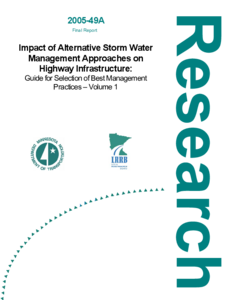Displaying results 1 - 10 of 76
Characteristics of Erosion Control Measures and Their Impact on Erosion
Date Created
2002
Report Number
2003-05
Description
Climate Change Adaptation of Urban Stormwater Infrastructure
Creator
Date Created
2023-06
Report Number
2023-21
Description
Modeling Aquifer Inhomogeneities With Analytic Elements With Application In A Model of Flow At The St. Croix Rest Area Storm Runoff Pond
Creator
Date Created
1985-12
Report Number
89-005
Description
The Cost and Effectiveness of Stormwater Management Practices
Date Created
2005
Report Number
2005-23
Description
Impact of Alternative Storm Water Management Approaches on Highway Infrastructure: Guide for Selection of Best Management Practices - Volume 1
Date Created
2006
Report Number
2005-49A
Description










